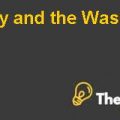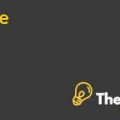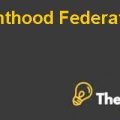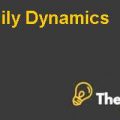Unilever in Brazil's Case Case Study Help
Executive Summary
In this report, we examine Unilever's marketing strategies in Northeast Brazil, with a primary focus on targeting the low-income consumer segment. With a commitment to sustainability and social responsibility, Unilever is presented with a compelling opportunity in this region, characterized by significant market potential and unique consumer dynamics. The report evaluates the options for Unilever's brand portfolio, product development, pricing, and promotion strategies tailored to the low-income segment.
Recommendations include introducing a new brand, Limpex, emphasizing sustainability, expanding digital marketing efforts, closely monitoring cannibalization, diversifying product offerings, and strengthening partnerships. This report provides a strategic approach to address the challenges and opportunities of marketing to low-income consumers in Northeast Brazil while maintaining Unilever's commitment to responsible business practices.
Introduction
Unilever, a multinational company, has corporate headquarters in both London and the Netherlands. The business, which opened for business in 1929, is a pioneer in the creation of home care products. OMO, the first detergent powder that Unilever introduced in Brazil, cemented the company's position as the market leader in the detergent sector.
In Brazil, the detergent industry is Unilever's cash cow, supporting growth in the food and personal care industries. Unilever's main goal as a company is to promote sustainable growth by improving people's lives everywhere they live through its operations and products while minimizing its negative environmental effects. Unilever is committed to fostering change through its operations, partnerships, and products because it considers the sustainability of the planet and the well-being of society to be crucial to the success of the business
Stituational Analysis
Analysis and Rationale
Unilever should indeed target the low-income segment of consumers in the Northeast of Brazil for several compelling reasons. The Northeast region, which is home to a sizeable share of Brazil's population, has a huge market potential. Unilever has a tremendous chance to grow both its market share and client base only from one factor alone.
Furthermore, large brands continue to underserve this market sector. Due to their limited purchasing power, many low-income consumers in the Northeast today rely on affordable, regional, or unbranded products. Due to this circumstance, Unilever has a sizable window of opportunity to intervene and cater to the particular demands and preferences of these customers (Vittorio).
It's critical to take into account the income gap between Brazil's Northeast and other regions. Due to the economic disparity, consumer choices and behaviors in the Northeast may be very different from those in more affluent areas. Particularly among low-income consumers, price takes precedence over expensive brand names and features, resulting in a unique market dynamic.
The case also highlights the Northeast's significantly lower detergent consumption compared to the Southeast, which can be ascribed to several variables, including lower income levels. Unilever can benefit from this by providing inexpensive goods designed to fit the spending limits of low-income customers in the Northeast (Kumar, 2013).
Furthermore, the segmentation of social classes that is common in Brazil shows that the majority of consumers in the Northeast belong to the lower-income groups (C, D, and E+). In contrast to their counterparts in wealthy places, these consumers may have distinct interests and priorities and tend to be very price-sensitive. For items to be successful in this market, they must be tailored to these preferences (Kumar, 2013).
Detergent products owned by Unilever include Omo, which is marketed as a luxury brand. Launching a new brand or revamping an existing one to specifically target the low-income demographic in the Northeast would be a strategic move to avoid diluting the premium image of its existing brands.
However, this action is consistent with Unilever's dedication to corporate social responsibility and social impact (CSR). Unilever can simultaneously increase its business and improve the lives of people in the Northeast, satisfying its social responsibility goals, by offering affordable and high-quality products to low-income consumers (Vittorio).
Unilever should target the low-income segment in the Northeast for several reasons:
- Market Potential: The Northeast region represents a significant portion of Brazil's population, and a substantial number of low-income consumers reside there.
- Untapped Market: This segment is relatively underserved by major brands, providing Unilever with an opportunity to gain a competitive advantage.
- Consumer Needs: Low-income consumers have distinct needs and preferences, which can be addressed through targeted marketing and product offerings............
- Unilever in Brazil’s Case Case Study Help
This is just a sample partial case solution. Please place the order on the website to order your own originally done case solution.













